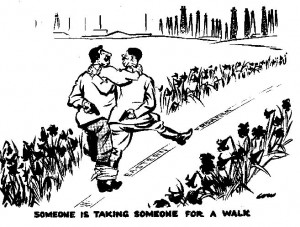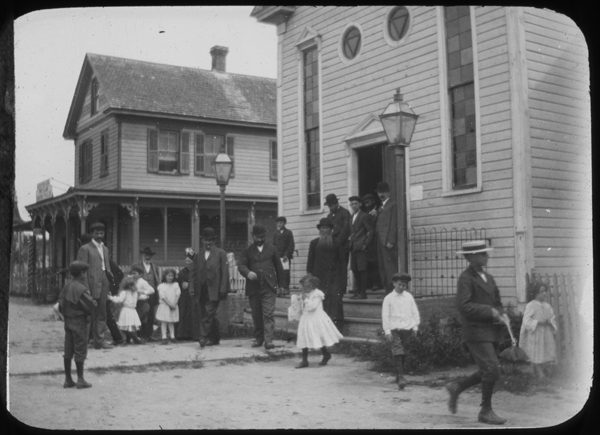
England and France were bitterly anti-communist. The speeches of Churchill in the 1930s against communism and Russia were no less vitriolic than the speeches made in Germany against communism. But with world tensions rising, England and France sent delegations to Russia to negotiate an alliance at the beginning of 1938. The negotiations got nowhere, however. They only convinced Stalin further that the West was very weak and would not resist Hitler.
The Russian foreign minister at the time was a Jew, Maksim Litvinov (1876–1951). There were many Jews in high offices in Russia, not the least of which was Stalin’s brother-in-law, Lazar Kaganovich. He fired Litvinov, because he knew that Germany could not make a deal with a Jew, and appointed in his place Vyacheslav Molotov (1890-1986), the consummate party man. Molotov even voted for sending his own wife to Siberia. That was exactly the type of man Stalin needed for the job. He was dour, humorless, cynical and cruel beyond words. He taught the world that “nyet” means “no.”
Hitler picked up on the signal immediately. In August 1939, he sent to Russia his foreign minister, Joachim von Ribbentrop (1893–1946) – also an utterly cruel and heartless person. The bitter enemies, Nazi Germany and Soviet Russia, shocked the world and signed a non-aggression pact.
Hitler had spent most of his adult life ranting like a madman against Stalin and the Bolsheviks. To him, they were equal to the Jews. Yet, in one of the great acts of cynicism, in a history riddled with cynical politics, Hitler formed an alliance with Stalin. When interests coincide even the oddest couples can find themselves as bedfellows, strange as it may seem. That may be a cynical and Machiavellian view of politics, but it holds true all too often.
In The Siege by Conor Cruise O’Brien there is a photograph of the World Zionist Congress that took place in August 1939 on the eve of the war and showing the faces of David Ben-Gurion, Chaim Weitzmann and other leaders when this pact between the Germans and the Russians was announced. The worry on their faces is so expressive that it is clear that they knew something terrible was about to happen; the world as they knew it was about to change irrevocably for the worse. In some ways that picture is scarier than pictures of the Holocaust itself.
The public agreement shook up the world badly enough. However, there was a secret addendum to the agreement which made it even worse than it looked, if that was possible. It detailed how Poland would be divided in the upcoming war. When the German army would reach a certain point, roughly 60% of Poland, it would stop and allow the Russian army to move in and take over the other 40%.
Poland would disappear.
In order to seal this deal, Stalin made sure that most of Polish Jewry would fall under the jurisdiction of the Nazis. He knew what Hitler was after. It allowed him to extract from Germany many concessions of territory that Hitler was not originally willing to grant.
The non-aggression pact between bitter enemies Nazi Germany and Soviet Russia (referred to as the Molotov-Ribbentrop Pact) was supposed to last 25 years. It lasted only two. However, in those two years it changed history. It effectively meant that Nazi Germany had a free hand to invade Poland and conduct the one-front war Hitler’s generals demanded.












